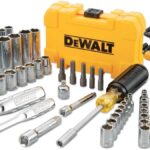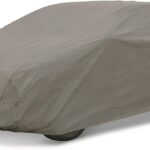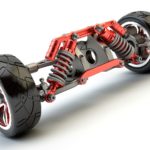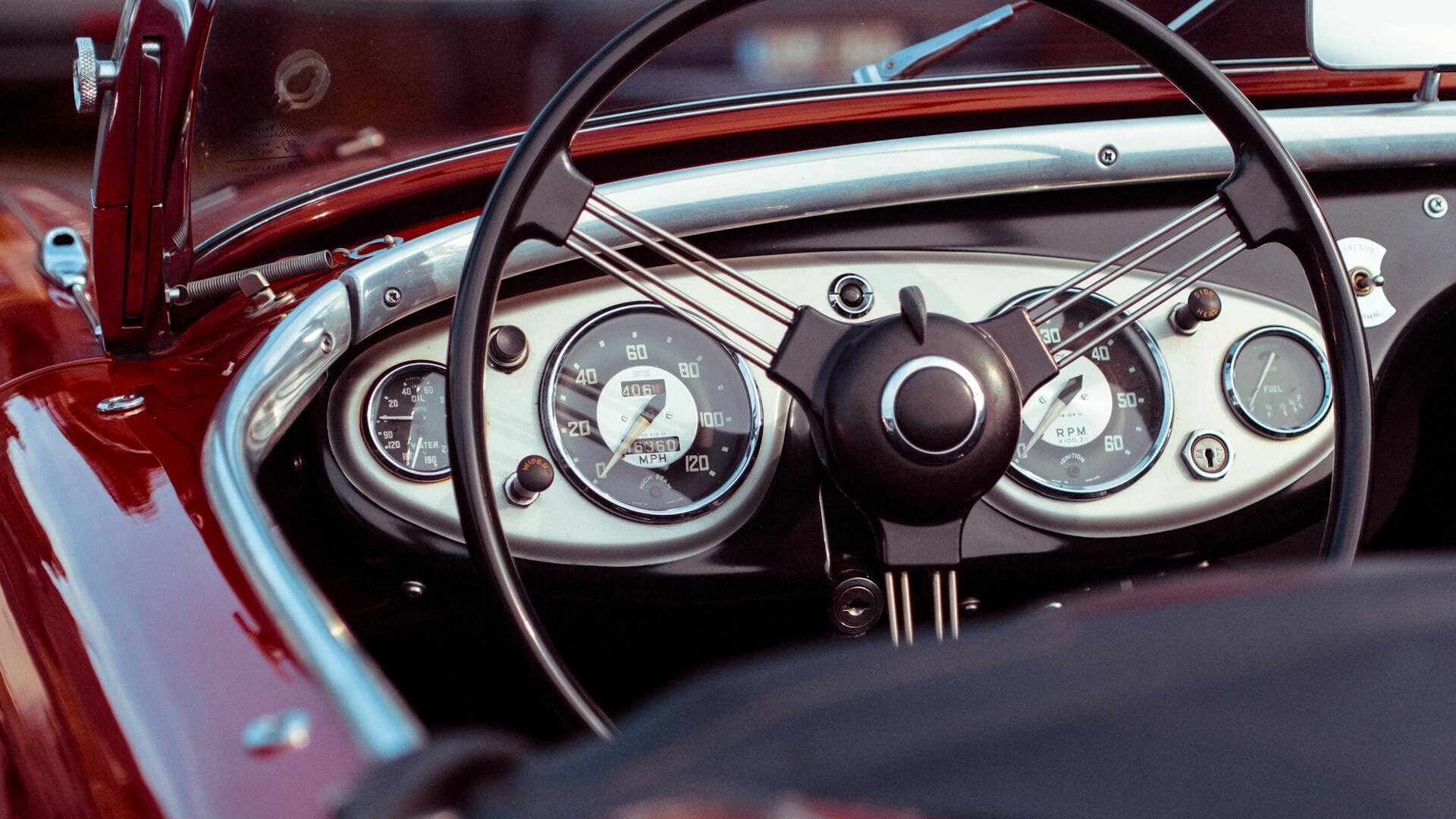
Creating a cohesive cabin starts with small, visible choices. This guide walks U.S. drivers through a practical Style Upgrade: Matching Your Wheel Cover to Your Car Interior so your vehicle feels polished and intentional.
Visual cohesion elevates perceived value. Automotive authorities like MotorTrend and Car and Driver report that well-chosen interior upgrades can make a car feel newer and more refined, boosting owner satisfaction and resale appeal. Wheel cover matching and thoughtful car interior styling are simple ways to achieve that effect without costly repairs.
For clarity, this piece uses precise terminology. Wheel covers refers to hubcaps and decorative rim covers that sit on the exterior wheel. Steering wheel covers are interior accessories that change grip, texture, or color. Materials covered include plastic, metal, fabric, leather, and synthetic leather, with trim and accents meaning dashboard, door, and seat highlights that tie a look together.
The article maps a clear path. Sections 3–5 examine materials and design choices for both steering wheel covers and exterior wheel cover matching. Sections 6–9 address functionality and seasonal aspects, including interior-wheel coordination and technological options. Section 10 covers budgeting and finding value. Section 11 ties everything into a final styling philosophy for everyday drivers, style-conscious owners, and aftermarket shoppers in the United States.
Key Takeaways
- Matching wheel cover to interior boosts perceived quality and resale appeal.
- Differentiate between wheel covers (hubcaps) and steering wheel covers for proper styling.
- Material choice—plastic, metal, fabric, or leather—affects look and feel.
- The guide balances style with function, seasonal needs, and budget.
- Targeted advice helps drivers achieve consistent interior-wheel coordination across popular brands and trims.
Why Wheel Covers Matter for Your Vehicle’s Aesthetic
A well-chosen wheel cover can lift the entire look of a car. From classic chrome-look hubcaps to matte black contemporary designs, wheel cover aesthetics set the tone before anyone sees the cabin. Styling trends reported by AutoExpress and Edmunds show finishes such as gloss, matte, and metallic interact with interior materials like leather, suede, and carbon trim to create a cohesive visual statement.
Enhance Visual Appeal
Finish and texture matter when you want to enhance visual appeal. Gloss finishes catch light and add brightness, while matte treatments read as modern and subtle. Metallic accents can echo chrome trim or aluminum pedals to create rhythm between exterior and interior elements. These choices make a car look intentional and polished.
Protect Your Wheels
Beyond looks, quality wheel covers help protect wheels from curb rash, road salt, and debris. Materials such as stainless steel and UV-stable plastics resist corrosion and fading. Brands known for durable automotive accessories, like WeatherTech and Husky Liners, use corrosion-resistant materials that extend rim life and reduce long-term maintenance.
Personalize Your Drive
Personalization options allow drivers to reflect their taste through color, texture, and badges. Aftermarket choices for steering wheel covers and hubcaps include leather, neoprene, and sheepskin, each offering different mixes of comfort, grip, and luxury. Thoughtful upgrades can boost driving enjoyment and may improve resale appeal when the look stays tasteful and coordinated.
Choosing the Right Material for Your Wheel Covers
Picking the right wheel cover materials shapes both curb appeal and cabin comfort. Match exterior hubcaps to interior textiles for a cohesive look. Think about climate, driving style, and the balance between cost and longevity.
Plastic vs. Metal Wheel Covers
Plastic options like ABS and polypropylene lead the market because they are light and budget-friendly. Brands such as Pilot Automotive and Putco use ABS blends to offer molded styles and wide color options. Corrosion resistance and low cost are clear benefits.
Plastic pieces can lose impact resistance and may fade if they lack UV stabilizers. For drivers who hit rough roads, plastic can chip more easily than metal.
Metal wheel covers made from stainless steel or aluminum deliver a premium look and stronger protection against curb damage. They weigh more and come at a higher price, yet they age well and keep metallic finishes longer.
Scratches are a common drawback for metal covers, but many owners accept that trade-off for durable hubcaps and a long service life.
Fabric Wheel Covers: Comfort and Style
Fabric wheel covers focus on the steering wheel covers material used inside the car. Leather and synthetic leather (PU) supply a refined touch, strong wear resistance, and better heat tolerance. Coverking and Classic Accessories offer many leather-style options.
Neoprene and neoprene blends resist water and provide strong grip in wet or cold conditions. WeatherTech and similar brands build interior protection items with these materials for active, all-weather use.
Sheepskin and fleece bring warmth and comfort in winter climates. They require gentle cleaning to avoid matting, but they remain popular in colder U.S. regions.
Breathable textiles and perforated materials help keep hands cool during summer. They trade some long-term durability for comfort, so choose based on how often you drive and how you care for interior fabrics.
Choose a mix: aluminum-look hubcaps with a leather steering wheel cover creates a sporty, upscale cabin. Pair neoprene steering wheel covers with rugged exterior covers for active, all-weather driving where durable hubcaps and water-resistant steering wheel covers material matter most.
Also Read:
- How To Choose Best Car Cover for Your Car?- Complete Guide
- What Is the Fastest Car in the World?
- How to Clean Leather Car Seats Without Damaging Them
Color Coordination: Finding Your Perfect Match
A car’s color choices shape how the interior feels. Thoughtful color coordination wheel covers and steering wheel covers color match can turn a plain cabin into a cohesive, stylish space. Start by looking at the dominant tones in seats and dash, then add small accents that echo those elements.
Understanding Color Theory
Basic color rules help with coordinating car interior colors. Complementary schemes pair opposite hues on the color wheel for strong contrast. Analogous schemes use neighboring hues for a calm, blended look. Monochromatic schemes stick to one hue with varied tints and shades for subtle unity.
Metallic finishes read as neutral accents in auto interiors. Chrome, brushed aluminum, and gunmetal interact well with both warm and cool palettes. Use this knowledge when selecting color coordination wheel covers so metallic trims and painted surfaces do not clash.
Tips for Coordinating Colors
Begin with the dominant interior color: seats, dash, and door panels set the stage. Match secondary accents like stitching and piping to create balance. Neutral wheel cover tones such as black, silver, and gunmetal offer flexibility across styles.
Add a restrained accent on the steering wheel covers color match to echo dashboard stitching or seat piping. Contrast light and dark surfaces to keep controls visible and to reduce glare for safer driving. Test samples in natural light; retailers like Amazon, AutoZone, and Advance Auto Parts often offer swatches or easy returns for trials.
Popular Color Combinations
Some pairings work especially well for common interior schemes. A black interior with matte black or gunmetal wheel covers and a black leather steering wheel cover creates a stealth, unified look. Tan or beige interiors pair nicely with brushed aluminum or chrome-look covers and a brown leather wrap for a classic, upscale vibe.
Gray interiors suit silver or chrome wheel covers and two-tone steering wheel covers in black and gray for modern cohesion. For sporty cars, red accents with black wheel covers featuring a red pinstripe and a black steering wheel cover with red stitching deliver high-impact contrast.
| Interior Style | Wheel Cover Choice | Steering Wheel Accent | Effect |
| Black modern | Matte black or gunmetal | Black leather wrap | Stealthy, cohesive look |
| Tan / Classic luxury | Brushed aluminum or chrome-look | Brown leather steering wrap | Warm, upscale appearance |
| Gray / Contemporary | Silver or chrome | Two-tone black/gray cover | Clean, modern cohesion |
| Sporty with red accents | Black with red pinstripe | Black cover with red stitching | Dynamic, race-inspired flair |
Patterns and Designs That Elevate Your Style
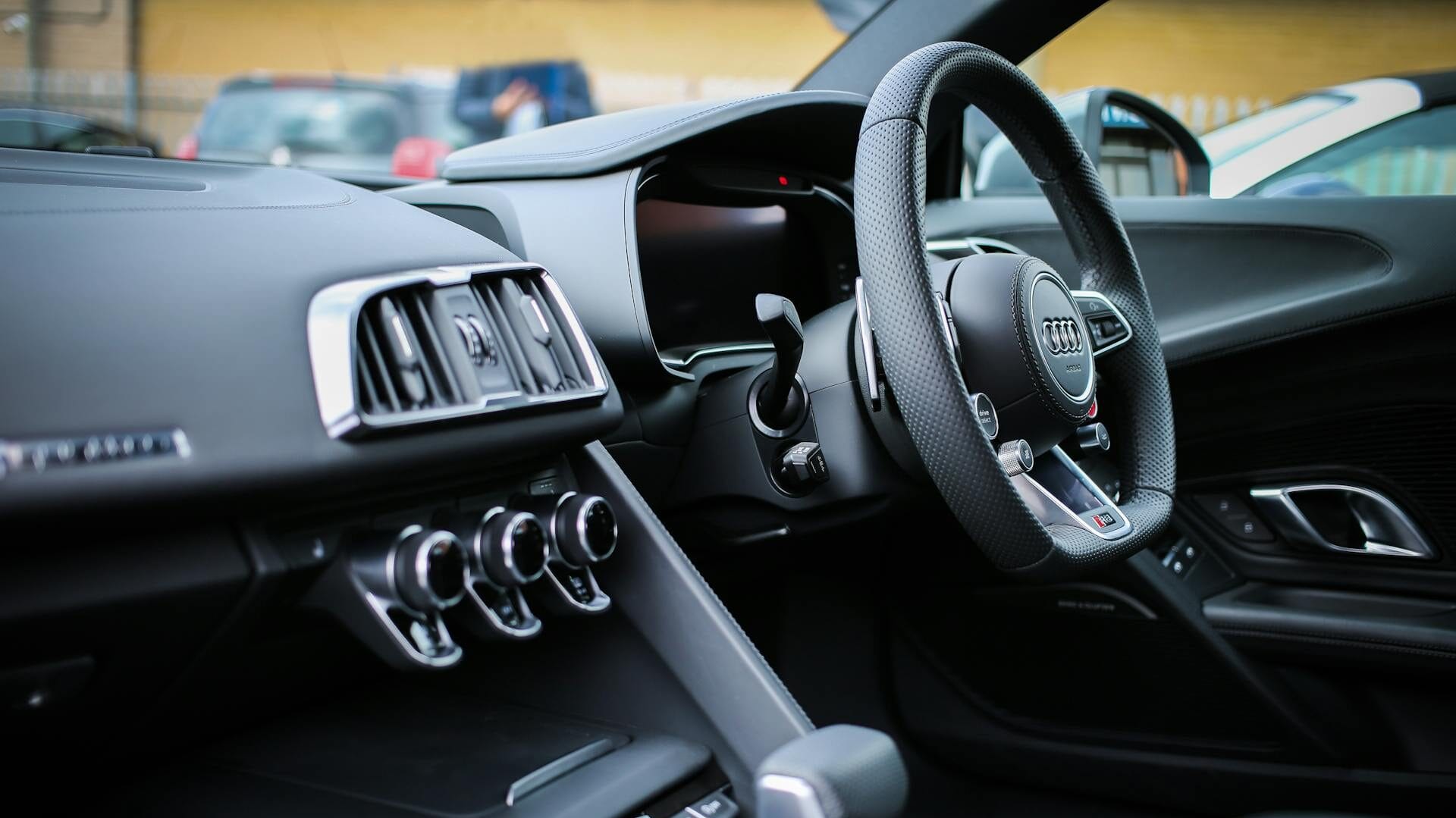
Wheel cover patterns set the tone for a vehicle’s look. Pick a style that matches the car’s era, interior, and intended use before you commit. Small choices in texture, finish, and graphics change the impression from subtle elegance to bold performance.
Classic vs. Modern
Classic designs focus on multi-spoke layouts, chrome-plated finishes, and retro hubcaps that suit vintage and luxury cars. Suppliers such as Dayton Wire Wheels and American Retro recreate period-correct pieces that pair well with leather interiors and wood accents.
Modern wheel cover design favors minimalism and aerodynamic shapes. Sleek aero-style covers and aggressive multi-finish patterns complement contemporary sedans and EVs. Look to OEM cues from Tesla and Audi for cohesive, performance-oriented styling that ties exterior and cabin design together.
Choose classic designs for older sedans and trucks to preserve authenticity. Use modern patterns on performance models and electric vehicles to highlight efficiency and tech-forward character.
Custom Graphics and Logos
Custom graphics wheel covers let owners express brand loyalty or personal taste. Options include full custom prints, manufacturer logo-compatible center caps, and decal-ready covers that accept durable stickers or inserts.
Keep legal and branding rules in mind. Avoid trademark misuse by choosing licensed inserts or center caps sold by manufacturers or authorized resellers. Many eBay sellers and specialty shops supply licensed logo inserts for popular brands.
Use custom graphics wheel covers for fleet branding, rally-style looks, or personal emblems. Reputable customizers print with UV-resistant inks and apply protective clear coats to prevent fading and peeling. Beware of low-cost decals that may lift in heat or shed under car washes.
Steering wheel covers designs can mirror hubcap graphics to create a unified interior theme. Matching motifs gives a balanced, finished appearance that reads well to onlookers and passengers.
Functionality Meets Fashion
Style and purpose can work together when you pick the right covers for your wheels and cockpit. Choices range from sleek aerodynamic wheel covers that trim drag to textured steering wheel wraps that improve grip. Small decisions about finish and fastening affect fuel economy, upkeep, and long-term appearance.
Aerodynamic Wheel Covers
Flat, smooth-faced aerodynamic wheel covers reduce turbulence around the rim. Studies by the EPA and energy-efficiency reports note measurable gains on models like Tesla and the Hyundai Ioniq when wheel aerodynamics are optimized. These covers can give a slight boost to MPG or EV range on highway runs.
Trade-offs exist. Aero designs can collect road grime differently and may not suit drivers who need frequent wheel access. Functional wheel covers work best for steady, highway-focused driving and vehicles with clean-road habits.
Easy Installation and Maintenance
Wheel cover installation comes in several forms: snap-on hubcaps, bolt-on covers, adhesive-backed trim rings, and interchangeable center caps. Basic tools such as a lug wrench or socket set are often enough. Always check fit and torque to prevent dislodging while driving.
For cleaning, use mild detergent and a microfiber cloth on painted or plastic surfaces. Aluminum and stainless finishes respond well to a metal polish. For steering wheel covers care, leather cleaners and conditioners from brands like Lexol or Meguiar’s keep the surface supple and grippy.
Durability improves with UV-resistant coatings on exterior pieces. Schedule wheel cover maintenance at regular intervals, and wash or condition steering wheel covers care items after heavy use or every few months. DIYers can handle most installs, but consult a professional if covers interfere with wheel balance or access to sensors.
Seasonal Considerations for Wheel Cover Selection
Choosing the right wheel covers for each season keeps your car looking sharp and running safely. Seasonal wheel covers should balance protection, grip, and style so you get the best performance year-round.
Winter Wheel Cover Styles
Pick corrosion-resistant materials like stainless steel or heavy-duty ABS with UV stabilizers to resist road salt and moisture. Closed-face designs limit slush and salt ingress, reducing cleaning and corrosion risk.
Steering wheel covers winter buyers favor include shearling and insulated options. Sheepskin covers sold by retailers such as Amazon and specialty auto shops give warmth and improved grip in cold weather.
Check fit and clearance so wheel covers do not block lug nuts or wheel sensors. Maintain compatibility with winter tires and confirm traction is not affected by any decorative element.
Summer Styles for Heat and UV Protection
For hot months, choose breathable, perforated fabrics or lighter-colored steering wheel covers to cut down heat buildup. Materials like neoprene and perforated leather wick sweat while preserving grip on long drives.
Use UV-resistant finishes on exterior wheel covers to prevent fading in strong sun. UV protection steering wheel covers and protective sprays or ceramic coatings help preserve color and material in high-sun regions.
Park in shade, use sunshades, and follow a simple cleaning routine to remove sunscreen and skin oils. These steps prolong cover life and keep summer wheel covers looking fresh.
| Season | Recommended Materials | Key Benefits | Practical Tips |
| Winter | Stainless steel, heavy-duty ABS, shearling steering wheel covers | Corrosion resistance, insulation, improved grip in cold | Choose closed-face designs; verify lug nut and sensor access; use insulated steering wheel covers winter |
| Summer | Perforated leather, neoprene, breathable fabrics, UV-resistant finishes | Heat reduction, sweat-wicking, color retention | Use UV protection steering wheel covers; park in shade; clean oils and sunscreen regularly |
| All-season | UV-stabilized ABS, hybrid textiles | Balanced protection, versatile style | Rotate covers by season; store off-season covers properly; consider seasonal wheel covers for best performance |
Wheel Covers and Interior Theme Matching

A well-chosen wheel cover can tie a cabin together. Think of it as the finishing touch that reflects your vehicle’s character and materials.
Matching Textiles with Wheel Covers
Start by pairing steering wheel covers with seat fabrics like leather, cloth, or Alcantara. Smooth leather wraps work best with leather seats for a seamless feel.
Textured fabric covers pair nicely with cloth seats to preserve tactile balance. Match perforated leather steering covers to perforated leather seats for consistent breathability and a factory look.
Match stitch patterns and thread colors to existing upholstery stitching. This small detail delivers a bespoke, factory-finished appearance without drawing undue attention.
Incorporating Accents and Trim Colors
Echo door pulls, console trim, and dashboard bezels in wheel cover details. Use piping, stitching, or inset panels in the same color family to create visual flow.
Choose metallic or carbon-fiber-look wheel covers when the cabin already has those trims. Brands like BMW, Mercedes-Benz, and Volvo offer OEM examples of consistent trim themes that inspire a unified high-end look.
Keep accent colors sparse and intentional. Small touches such as a pinstripe or selective stitching act as steering wheel covers accents without overpowering the cabin.
| Interior Material | Recommended Wheel Cover | Key Detail |
| Full-grain Leather | Smooth leather wrap | Match thread color for upholstery and wheel cover match |
| Perforated Leather | Perforated leather steering cover | Consistent breathability and appearance |
| Cloth Seats | Textured fabric wrap | Maintain tactile coherence with matching textiles wheel covers |
| Alcantara | Suede-like wrap | Soft feel that complements sporty interiors |
| Metallic or Carbon Trim | Metallic or carbon-fiber-look cover | Use trim color coordination to echo cabin accents |
Incorporating Technology into Wheel Covers
Modern wheel covers blend style with function by bringing smart features and refined engineering to your steering and wheels. Innovations range from simple plug-in heating elements to aerodynamic shells that help electric vehicles stretch their range. Pick options that match your driving habits and stay compatible with your car’s safety systems.
Smart Features in Wheel Covers
Heated steering wheel covers come in USB and 12V variants. They use integrated heating elements and offer toggle or Bluetooth app controls. Some models from brands like WeatherTech and Autoglym provide quick-connect power options that avoid complex wiring.
Illuminated wheel covers include LED trims or reflective bands that improve visibility when you exit the car at night. These illuminated wheel covers often have low-power drivers and simple on/off switches to limit electrical load.
Technology wheel covers also include sensor-friendly designs. OEM aero caps from Tesla show how active surfaces and optimized materials can reduce drag on EVs. Aftermarket aero kits mimic this approach and add active vanes for efficiency gains without interfering with tire sensors.
Steering wheel covers tech must preserve airbag function and steering controls. Certified products list vehicle compatibility and safety testing. Confirm power sourcing and check that electronics meet automotive interference standards before purchase.
Benefits of Technologically Enhanced Designs
Comfort improves with heated steering wheel covers in cold climates. Breathable, moisture-wicking fabrics with antimicrobial finishes boost hygiene and keep hands dry during long drives.
Efficiency gains come from aerodynamic wheel covers and aero vanes. Energy-efficiency testing and manufacturer claims report modest improvements in MPG or EV range. Those small gains add up on long commutes.
Safety and convenience rise with illuminated wheel covers and reflective trims. They increase nighttime visibility for passengers and pedestrians. Choose products certified for safety to avoid any compromise to airbag deployment.
| Feature | Typical Power | Main Benefit | Compatibility Notes |
| Heated steering wheel covers | USB or 12V adapter | Warmth in cold weather, improved comfort | Check steering wheel airbag and control clearance |
| Illuminated wheel covers | Low-voltage LED drivers | Better visibility when exiting at night | Ensure wiring does not interfere with door sensors |
| Technology wheel covers (aero) | Passive or electronically actuated | Reduced drag, slight range or MPG gain | Designed for specific wheel sizes and sensor layouts |
| Steering wheel covers tech (connectivity) | Bluetooth modules, app control | Custom temperature and timing control | Verify EMI shielding and car compatibility |
Budgeting for Wheel Covers
Deciding how much to spend on wheel upgrades takes a bit of planning. A clear wheel covers budget helps you weigh immediate savings against long-term value. Think about fit, materials, and safety features before you buy.
Cost vs. Quality: What to Look For
Price ranges vary widely. Entry-level ABS hubcaps and basic steering wheel wraps often fall between $15 and $50. Mid-range leather or metal-look covers sit around $50 to $150. Premium custom or OEM-matched covers typically start above $150.
Quality indicators matter more than price alone. Check for genuine leather, stainless steel trim, or UV-stabilized ABS. Look for clear warranty terms and reliable reviews from owners. Brands such as Coverking, WeatherTech, Pilot Automotive, and IMS often appear in buyer feedback for durability and fit.
Think long term. Durable materials and the right fit reduce how often you replace covers. Cheap covers may fade, peel, or lose grip faster, raising overall cost despite a low upfront price. Use cost vs quality wheel covers as your guide when comparing options.
Finding Affordable Options Without Sacrificing Style
Seasonal sales are a practical way to improve value. Black Friday and Memorial Day discounts often include bundled deals like steering wheel cover plus floor mats. Reputable retailers such as Amazon, AutoZone, and Advance Auto Parts stock budget-friendly choices with verified reviews.
Consider simple DIY upgrades. Custom stitching or accent trims on lower-cost covers can mimic premium looks for less money. Prioritize fit and compatibility; sensor clearance and airbag safety must not be compromised for style.
For shoppers focused on smart buys, look for affordable steering wheel covers that balance grip and material quality. If you need budget cosmetic options, cheap hubcaps can refresh appearance while you save for higher-end pieces later. Seek value wheel covers that earn praise for durability and style in real user reviews.
Use this checklist when you shop: material specs, warranty length, customer feedback, and brand reputation. A modest wheel covers budget can still deliver a polished interior and reliable performance when you compare cost vs quality wheel covers carefully.
Final Thoughts on Upgrading Your Style
Upgrading wheel covers is more than a visual tweak — it’s a way to shape how your car feels every day. Thoughtful choices create a cohesive car interior that reflects your taste while keeping safety and resale value in mind. Start small if you’re unsure: a new steering wheel cover or a subtle pinstripe can highlight personal expression car interior without overwhelming the cabin.
Embrace gradual experimentation. Test steering wheel covers style, fabric samples, and accent trims before committing to large exterior changes. For bespoke projects or complex installations, consult a professional detailer or an interior specialist to preserve fit, finish, and any sensor or airbag systems.
Beyond looks, wheel covers deliver comfort, better grip, protection, and seasonal adaptability that reinforce driving experience on daily routes and long trips. Before you buy, run a quick checklist: confirm sensor and airbag compatibility, choose materials suited to local climate, match textures and colors to your trim, assess installation and maintenance, and balance budget with lasting quality.
Use this article as a roadmap: pick materials, select colors and patterns, factor in function and tech, and finalize with budget-minded choices. Thoughtful pairing of form and function will leave you with a polished, personalized interior that enhances both style and driving comfort.
FAQs
Wheel covers (hubcaps and decorative rim covers) are exterior pieces that mount to your vehicle’s wheels to change appearance and offer some protection. Steering wheel covers are interior accessories that wrap the steering wheel to improve grip, comfort, and cabin style. Materials, functions, and installation methods differ—wheel covers are typically plastic or metal and attach to the wheel hub, while steering wheel covers come in leather, neoprene, sheepskin, and synthetic fabrics and slip over the wheel or fasten with stitching or elastic.
Visual cohesion raises the perceived quality of your vehicle and can increase personal satisfaction and resale appeal. Publications like MotorTrend and Car and Driver note tasteful aesthetic upgrades often translate to a higher perceived value. Coordinating finishes—matte, gloss, metallic—and echoing trim accents (stitching, piping, or chrome) create a polished, factory-like look that feels intentional rather than aftermarket.
Exterior wheel covers commonly come in ABS or polypropylene plastic (lightweight, affordable, UV-stabilized options available) and metals like stainless steel or aluminum (more durable, premium finish). Choose plastic for budget-friendly, corrosion-resistant options; choose metal for longevity and a higher-end look. Consider climate and exposure—stainless steel or UV-stable plastics resist salt and sun better.
For winter, insulated sheepskin or fleece covers provide warmth and comfortable grip. Neoprene offers water resistance and good grip year-round and handles cold climates well. For summer, breathable perforated leather or textile covers reduce sweat and heat buildup. Leather and synthetic leather balance premium feel and durability but require occasional conditioning to stay supple.
Start with the dominant interior color—seats and dash—then pick complementary or analogous accents. Neutral wheel cover tones like black, silver, or gunmetal offer flexibility. Use small accent details on steering wheel covers (stitching, pinstripes) to echo dashboard stitching or seat piping for subtle cohesion. Test swatches in natural light or order samples when possible.
Aerodynamic covers (smooth or flat-faced designs) can reduce drag and yield modest gains in fuel economy or EV range. OEM examples from Tesla and Hyundai show measurable improvements in real-world testing. The benefits are most noticeable at highway speeds, but trade-offs include potential for different dirt buildup and style preferences.
For painted or plastic exterior covers, clean with mild detergent and a microfiber cloth; avoid harsh solvents. Use metal polish for aluminum and stainless steel. For steering wheel covers, use dedicated leather cleaner and conditioner (such as Lexol) on leather, and gentle soap and air dry for textiles and neoprene. Regular cleaning prevents oils, sunscreen, and dirt from degrading materials.
Exterior snap-on or bolt-on covers generally don’t affect tire pressure sensors, but poorly fitted covers can obstruct lug nuts or fail to clear sensor housings. Steering wheel covers must allow proper airbag deployment and access to controls; select products explicitly labeled sensor- and airbag-compatible and follow manufacturer fitment guidelines.
Yes—custom printed covers, licensed center caps, and decal-ready surfaces are common. Use licensed inserts or authorized suppliers to avoid trademark issues. For longevity, choose UV-resistant inks and protective clear coats; low-cost decals may peel or fade quickly, especially in sun-exposed conditions.
Entry-level ABS hubcaps and basic steering wheel wraps run about $15–$50. Mid-range leather or metal-look options are $50–$150. Premium custom or OEM-matched covers typically exceed $150. Look for genuine materials, UV-stabilized plastics, and warranty coverage. Spending a bit more on quality often reduces replacement frequency and preserves appearance.
Heated covers and USB- or 12V-powered options provide comfort in cold climates and are practical for short-term use. Ensure any powered product is designed to avoid interference with vehicle electronics and does not impede airbag function. Choose reputable brands with clear power requirements and safety testing.
Classic multi-spoke or chrome finishes suit vintage or luxury vehicles. Minimalist aero or matte-finished covers pair well with modern sedans and EVs. Match the cover design to the vehicle’s overall theme—classic for older cars and trucks, modern for performance and electric models—to keep the look coherent and appropriate.
Photograph your interior in natural light, compare swatches, and request samples when retailers offer them. Many sellers on Amazon, AutoZone, and Advance Auto Parts provide return policies that let you try a product. For more accurate matches, bring a small swatch of upholstery or a photo to local shops that carry steering wheel covers and hubcaps.
Match textures first—pair leather steering covers with leather seats, and perforated covers with perforated upholstery. Echo trim colors sparingly through stitchwork or pinstripes rather than large contrasting panels. Prioritize fit and safety, then add small accents that tie exterior wheel finishes to interior trim for a professional, unified appearance.


